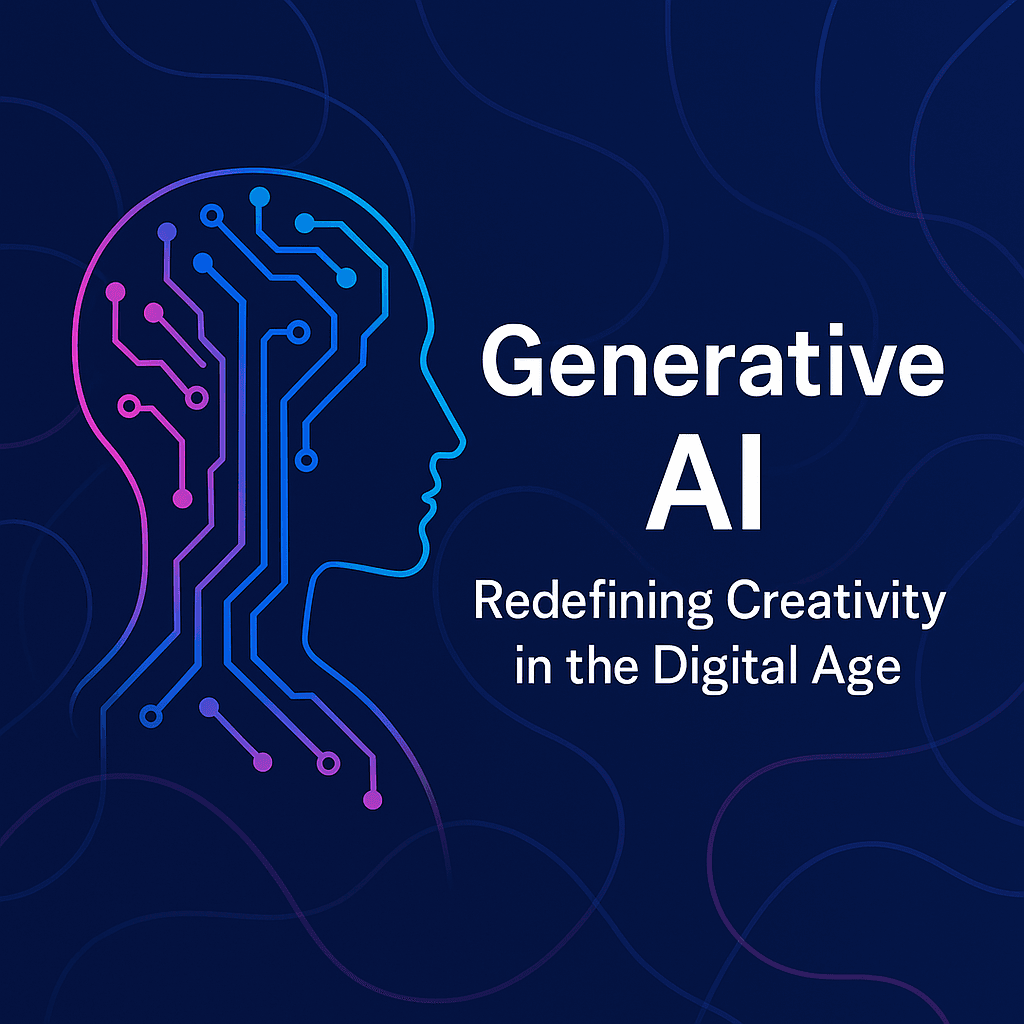Introduction
The rise of Generative AI has sparked a new era in artificial intelligence—one where machines can create. From writing poems and designing graphics to composing music and generating code, Generative AI is blurring the lines between human creativity and machine intelligence. But what exactly is Generative AI, and why is it making headlines across industries? Let’s explore the world of Generative AI, how it works, and the immense potential it holds for the future.
What is Generative AI?
Generative AI refers to a class of artificial intelligence models designed to create new content. Unlike traditional AI, which focuses on analyzing or classifying existing data, generative models generate new data that resembles the input they were trained on.
Whether it’s producing realistic images, crafting human-like text, or generating synthetic data for simulations, generative AI systems learn patterns from massive datasets and use that knowledge to create novel outputs.
How Does It Work?
At the core of Generative AI are models like:
Generative Adversarial Networks (GANs): Two neural networks—the generator and the discriminator—work against each other to produce high-quality outputs (used in image generation and deepfakes).
Variational Autoencoders (VAEs): These compress and reconstruct data in a way that allows new variations to be generated.
Transformers (like GPT and BERT): These models have revolutionized language generation by understanding context in human language.
Each of these architectures uses massive amounts of training data and deep learning techniques to learn complex relationships and patterns.
Applications of Generative AI
Generative AI is not just a tech demo—it’s being integrated across industries in transformative ways:
🔹 Content Creation
Writers, marketers, and content creators use tools like ChatGPT, Jasper, and Writesonic to generate blog posts, social media captions, and ad copy at scale.
🔹 Design & Art
Platforms like Midjourney, DALL·E, and Adobe Firefly let users generate unique visuals, logos, and concept art from simple text prompts.
🔹 Gaming & Entertainment
Game studios are using generative models to create characters, landscapes, and storylines dynamically, enhancing immersion and reducing development time.
🔹 Music & Audio
AI tools like Amper Music and Soundraw generate royalty-free soundtracks, while others assist with audio editing and voice synthesis.
🔹 Software Development
Coders now rely on AI-powered assistants like GitHub Copilot and Tabnine to generate code snippets, fix bugs, and automate repetitive tasks.
🔹 Healthcare & Drug Discovery
In medicine, generative models simulate molecular structures and predict interactions, accelerating the discovery of new drugs and treatments.
Benefits of Generative AI
- Speed and Efficiency: Automates repetitive creative tasks, saving time and resources.
- Inspiration and Innovation: Assists creators in brainstorming and experimenting with new ideas.
- Accessibility: Empowers non-experts to create high-quality content without specialized skills.
- Scalability: Allows businesses to produce content, code, or data at scale, consistently and quickly.
Ethical Concerns & Challenges
As powerful as Generative AI is, it also raises serious ethical and societal concerns:
- Misinformation & Deepfakes: AI-generated videos, images, and texts can be used maliciously to spread false information.
- Bias in Data: If training data includes bias, the AI-generated output may reflect and amplify it.
- Job Displacement: There are growing concerns about automation replacing creative and technical jobs.
- Copyright and Ownership: Who owns AI-generated content? Creators, users, or the models themselves?
The challenge is to balance innovation with responsible use, ensuring that generative AI is developed and deployed ethically.
The Future of Generative AI
Generative AI is still in its early stages, but its trajectory is clear—it’s rapidly evolving and expanding into every corner of our digital lives. As models become more sophisticated and multimodal (understanding and generating text, images, audio, and video together), we’re looking at a future where AI is not just a tool, but a co-creator.
The key will be in how we choose to use it—as a means of amplifying human creativity, improving efficiency, and solving complex problems responsibly.
Final Thoughts
Generative AI is more than just a tech trend—it’s a paradigm shift. As it continues to shape how we create, communicate, and innovate, it’s crucial to stay informed and thoughtful about its capabilities and consequences. Whether you’re a developer, artist, entrepreneur, or just curious about technology, now is the time to explore what generative AI has to offer—and how it might shape your future.

